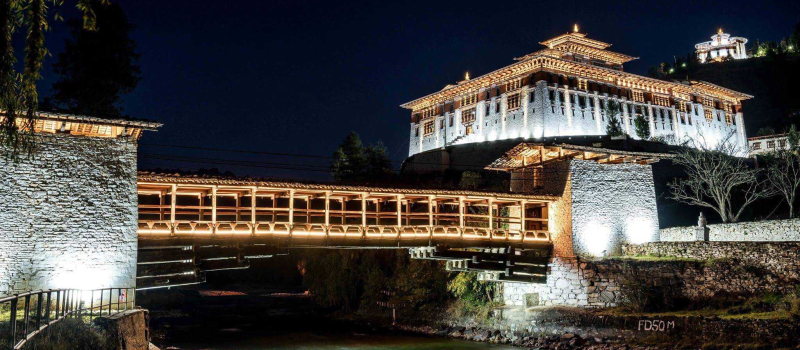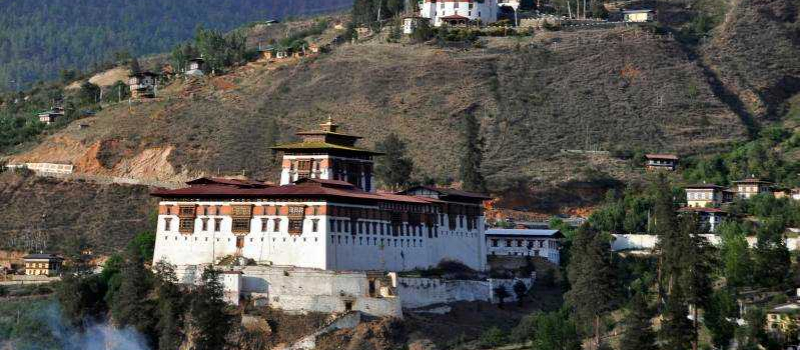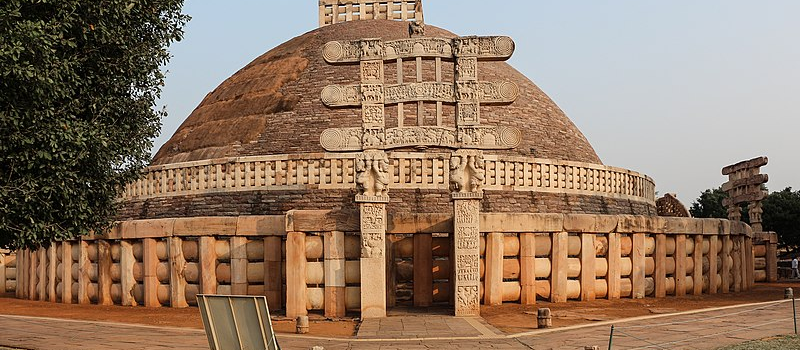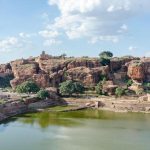Legacy Heights – Exploring the Riches of Rinpung Dzong
What makes Bhutan’s heritage and culture so special? Something tourists go to Bhutan to discover every year. The answer lies within the walls of these amazing monasteries rich with history. Nestled within the embrace of beautiful surroundings lies such a monastery of profound heritage and enduring cultural significance. Rinpung Dzong is a stunning monastery where the echoes of centuries past resonate through every stone and corridor.
Here, amidst the serene beauty of architectural marvels, lies a treasury of stories waiting to be discovered—a testament to the faith, art, and tradition that has shaped generations. So when you book those Bhutan Tour Packages, join us on a journey through the annals of history, where each step unveils a tapestry of wisdom, devotion, and the timeless allure of cultural legacy with these Rinpung Dzong Travel tips.Rinpung Dzong, also known as Paro Dzong or the “Fortress of Heap of Jewels,” is one the most amazing places to visit in Paro and serves as the administrative hub of the Paro district. Constructed in 1644 by the decree of Zhabdrung Ngawang Namgyal, this majestic structure derives its name from the abundance of cherished edifices it houses
Why is Rinpung Dzong important to the Bhutanese people?
Rinpung Dzong Bhutan stands as a testament to traditional Bhutanese architecture, boasting a labyrinth of courtyards, temples, administrative offices, and expansive open spaces encircled by towering walls. Adorned with intricate wooden carvings depicting traditional Bhutanese motifs, the dzong’s grandeur reflects the rich cultural heritage of the region.
Regarded as a prime example of Bhutanese architectural prowess, Rinpung Dzong Paro Bhutan captivates travelers from around the globe, drawing them to explore its captivating beauty. Its prominence as a top tourist destination in Bhutan is underscored by its breathtaking views, visible even from the approach to Paro Airport.
Accessible with ease, Rinpung Dzong beckons travelers with a mere 15-minute stroll from Paro town, inviting them to delve into its storied past and immerse themselves in the splendor of Bhutanese history and culture.

The Architecture of Rinpung Dzong
The Rinpung Dzong Paro Bhutan is located on a steep hillside, with the administrative courtyard standing 6 m higher than the monastic courtyard. Access to the dzong’s northeastern entrance, leading to the dochey or courtyard, branches off from the road to the National Museum. The central tower, or utse, within the dochey, soaring five stories tall, dates back to 1649, during the reign of Paro’s first penlop a.k.a governor. Adorned with intricately carved wood painted in gold, black, and ochres, and surrounded by towering whitewashed walls, the dzong exudes an aura of established power and prosperity.
A stairway leads to the monastic quarter, home to around 200 monks. The kunrey, serving as the monks’ classroom, is situated on the southern side, centered around a statue of Buddha at age 16. On the left of the exterior vestibule, you will find a mural depicting the ‘mystic spiral,’ a distinctive Bhutanese interpretation of the mandala. Other murals portray Mount. Meru – is encircled by seven mountain ranges and four continents.
Opposite the kunrey stands the expansive dukhang or prayer hall, adorned with exterior murals depicting the life of Tibet’s poet-saint, Milarepa. The first day of the spring Paro Tsechu is celebrated in this courtyard, drawing large crowds. The views from the far windows of the courtyard are breathtaking.
Outside the dzong, to the northeast of the entrance, lies a stone-paved festival ground where masked dancers perform the main Tsechu dances. At dawn on the final day of the festival, a thondrol—a massive thangka depicting Guru Rinpoche spanning over 18 square meters—is unfurled, mounted on a huge rail commissioned by the eighth desi or secular ruler of Bhutan, also known as Druk Desi, Chhogyel Sherab Wangchuck in the 18th century.
Below the dzong, the Nyamai Zam, a traditional wooden covered bridge, spans the Paro Chhu. A reconstruction of the original bridge, which was swept away in a flood in 1969, served as a defensive measure during times of war. The most picturesque views of Paro Dzong are captured from the west bank of the river, just downstream from the bridge.
What is the history of Rinpung Dzong?
Following a catastrophic fire in 1906, Penlop Dawa Penjor played a crucial role in revitalizing the Rinpung Dzong monastery, which had been destroyed, causing widespread chaos in the surrounding area. Before this event, the Dzong had already suffered significant damage from an earthquake in 1897. Furthermore, during the 17th century, it faced a Tibetan invasion.
Additionally, the Dzong has a rich history intertwined with legendary monarchs and prominent figures. Legend has it that in the 8th century, the Tibetan guru Padmasambhava, also known as Guru Rinpoche, visited the site. Upon seeing the elevated limestone base that would eventually become the foundation of the dzong, he named it “Rinpung Drak,” meaning “cliff of the heap of jewels,” giving rise to the current name of the dzong.
Its intricate crafts and artistry at the entrance convey sentiments of compassion, tranquility, and social cohesion. Furthermore, the sculptures within the Rinpung Dzong Bhutan depict the origins of Buddhist culture and the presence of spiritual entities.
Interesting fact – scenes from Bernardo Bertolucci’s 1993 film Little Buddha were shot at this location.

When is the best time to visit Rinpung Dzong?
The best time to visit Rinpung Dzong in Paro, Bhutan, is during the spring and autumn months, specifically from March to May and from September to November. The best time to visit Bhutan perhaps is during this period as the weather is typically clear and pleasant, offering moderate temperatures ideal for exploring Bhutan’s atmosphere and the Dzong’s majestic architecture and enjoying the breathtaking Himalayan scenery surrounding it.
In spring, the valleys burst with unique and beautiful flowers, including the renowned rhododendrons, magnolias, and wild azaleas, creating a vibrant and majestic landscape. Moreover, the season brings forth lush greenery and blooming flora, providing a magnificent backdrop for your visit to the Dzong.
Bhutan in autumn brings clear skies and excellent visibility, enhancing the experience of exploring the Dzong and offering ideal conditions for trekking and photography in the area. It is also the time when Paro hosts one of its most significant festivals, the Paro Tshechu, typically held in September or October.
If you plan your visit during this festival, you will have the chance to witness Bhutanese culture at its finest. With traditional dances, masked performances, and religious art forms taking place within the courtyard of Rinpung Dzong. However, keep in mind that these peak seasons attract a higher number of tourists, so it’s advisable to book accommodations and tours well in advance.

What are the Festivals in Paro Rinpung Dzong?
Paro Tshechu festival is a captivating festival held at Rinpung Dzong Bhutan, spanning from the eleventh to the fifteenth day of the second month in Bhutan’s traditional lunar calendar. From March to April, Rinpung Dzong sees a significant rise in tourists. The festivities include ceremonial displays of religious paintings and captivating traditional dances, depicting religious tales and folklore.
Furthermore, monks often participate in the grand activities of the event. A notable feature is the large ceremonial thangka, a colorful banner depicting the Eight Manifestations of Padmasambhava, which shields the ritual from the sun’s rays. Additionally, the presence of traditional garments such as the Gho adds to the splendor of this magnificent Tsechu Festival.
How to Reach Rinpung Dzong?
By Train: Traveling by train is not an option in Bhutan as the country lacks a railway network. The closest railway stations to Bhutan are Hasimara and New Alipurduar in West Bengal, India. From these stations, travelers can either hire a taxi or take a bus to reach Phuentsholing in Bhutan, the border town, and then continue their journey to Paro.
By Flight: For those traveling by air, Paro International Airport serves as the only nearest airport to Rinpung Dzong in Paro, Bhutan. Druk Air and Bhutan Airlines operate flights to and from select cities worldwide.
By Road: Road travel to Bhutan typically involves passing through the Indian town of Phuentsholing, which is accessible by road from West Bengal. From Phuentsholing, travelers ascend through the mountains to reach Paro.
Paro Rinpung Dzong Timings
The opening hours of Rinpung Dzong vary depending on the season, so it’s important to be well informed. Typically, it opens at 7 AM and closes at 5:30 PM from March to October. During the winter months from November to February, the dzong is open from 7 AM to 4 PM.
This adjustment accounts for the earlier sunset during winter, ensuring visitors have ample time to tour the dzong before departure. Therefore, there is a slight variation in the opening hours between the summer and winter seasons.

Testament of Buddhist Architecture and Culture
Rinpung Dzong stands as a testament to the rich history, cultural significance, and natural beauty of Bhutan. As a place of spiritual reverence and architectural marvel, it encapsulates centuries of tradition and embodies the essence of the region’s heritage. Nestled amidst breathtaking landscapes, its scenic backdrop only enhances the aura of tranquility and serenity that envelops the monastery.
From its ancient origins to its enduring cultural legacy, Rinpung Dzong in Bhutan continues to captivate travelers with its timeless charm and profound spiritual atmosphere. Whether admiring its intricate craftsmanship, immersing oneself in its vibrant festivals, or simply basking in the awe-inspiring views that surround it, a visit to Rinpung Dzong is an unforgettable journey through history, culture, and natural beauty.
What is the history behind Rinpung Dzong?
Situated atop a steep hillside in Paro, the Rinpung Dzong played a crucial defensive role for Bhutan during the 17th and 18th centuries, guarding against invasions from the north. Renowned for its detailed craftsmanship and unique construction method involving large interlocking beams without the use of nails, Rinpung Dzong stands as an exemplary representation of Bhutanese architectural excellence.
Constructed using clay rather than stone, Paro Rinpung Dzong managed to withstand a severe earthquake in 1897, although it succumbed to destruction by fire in 1906. Following the fire, Penlop Dawa Penjor rebuilt the Rinpung Dzong.
What is the significance of Rinpung Dzong in Bhutanese culture and religion?
A Dzong is a fortified complex of buildings that functioned as a primary center for a Buddhist school. The construction of most dzongs was strategic, aiming to establish strongholds for exerting influence over specific Buddhist schools and exercising control over the regions under the authority of those schools.
Rinpung Dzong in Bhutan serves as an administrative hub for Paro. The Dzong provided refuge for the city’s inhabitants during Tibetan invasions, functioning as a secure sanctuary. It served as a watchtower, with defensive attacks originating solely from within its fortress walls. Additionally, the dzong formerly served as the primary meeting place for the National Assembly before transitioning to house administrative offices.
Can visitors enter Rinpung Dzong?
Yes visitors can enter Rinpung Dzong Paro Bhutan and the timings for the same is 8 am to 6 pm Monday to Sunday. During the months from November to February the duration is shortened from 8 am to 4:30 pm.
Is there any entry fee to visit Rinpung Dzong?
Like most other Dzongs in Bhutan, there is no entry fee to visit Rinpung Dzong, and is completely free.





